Auxiliary Generator Replacement 6.6L (LB7) Engine
Removal Procedure
- Disconnect the negative battery cable. Refer to Battery Negative Cable Disconnection and Connection .
- Remove the drive belt. Refer to Drive Belt Replacement in Engine Mechanical - 6.6L.
- Disconnect the auxiliary generator electrical connector (4).
- Remove the auxiliary generator bolts.
- Remove the auxiliary generator.
- Remove the generator cable from the auxiliary generator, perform the following:
- If required, remove the auxiliary generator bracket bolt.
- Remove the auxiliary generator bracket.
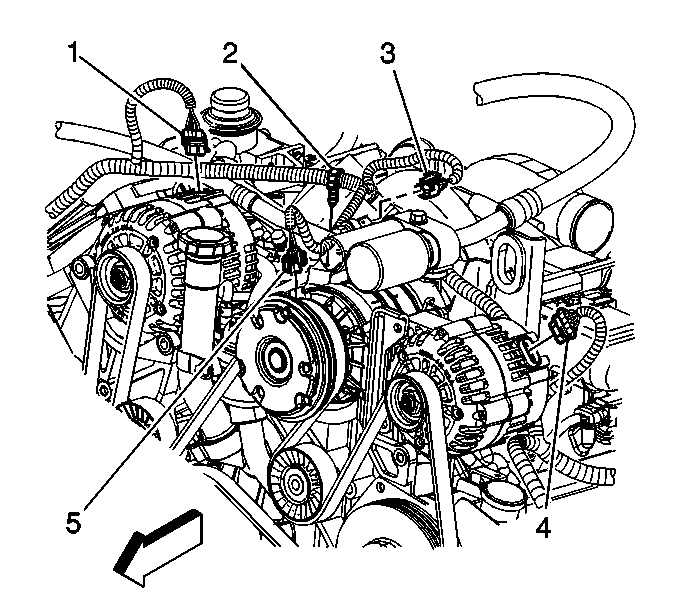
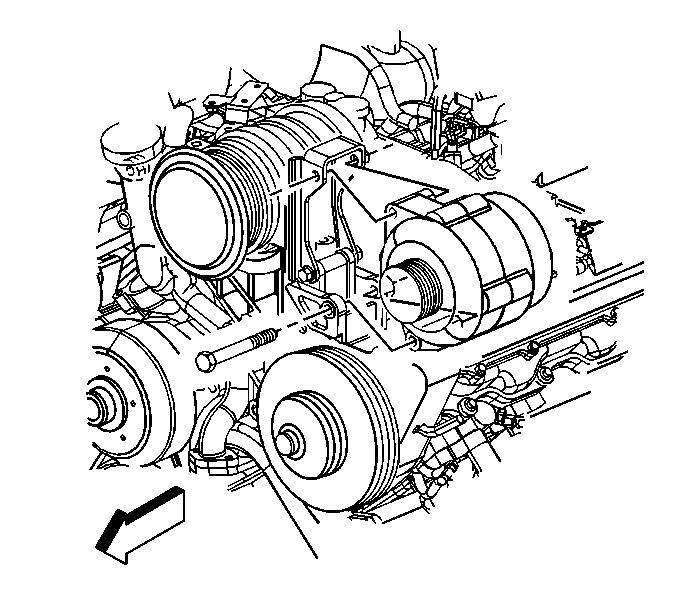
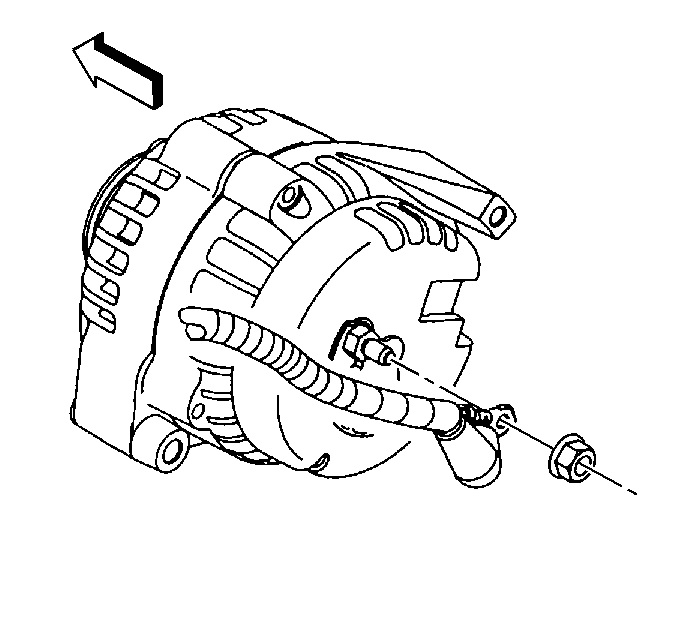
| 6.1. | Slide the boot down revealing the terminal stud. |
| 6.2. | Remove the generator cable nut from the terminal stud. |
| 6.3. | Remove the generator cable. |
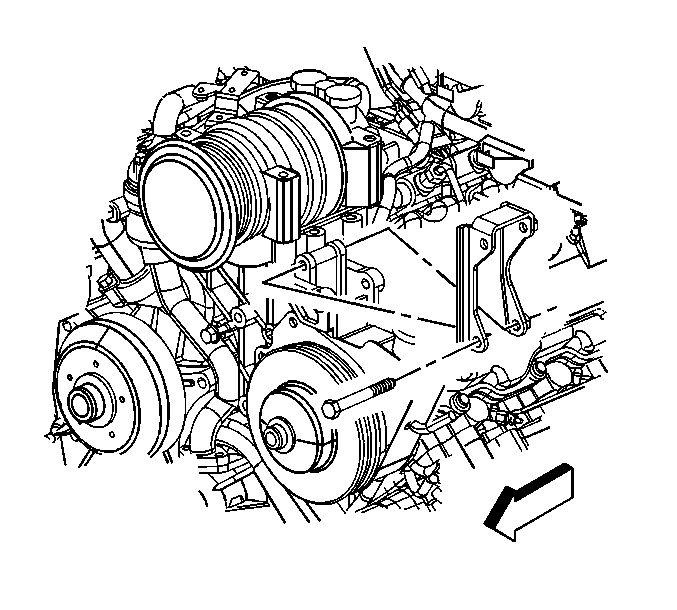
Installation Procedure
- If removed, install the auxiliary generator bracket.
- Install the auxiliary generator bracket bolt.
- Install the generator cable to the auxiliary generator, perform the following:
- Install the auxiliary generator.
- Install the auxiliary generator bolts.
- Connect the auxiliary generator electrical connector (4).
- Install the drive belt. Refer to Drive Belt Replacement in Engine Mechanical - 6.6L.
- Connect the negative battery cable. Refer to Battery Negative Cable Disconnection and Connection .

Notice: Use the correct fastener in the correct location. Replacement fasteners must be the correct part number for that application. Fasteners requiring replacement or fasteners requiring the use of thread locking compound or sealant are identified in the service procedure. Do not use paints, lubricants, or corrosion inhibitors on fasteners or fastener joint surfaces unless specified. These coatings affect fastener torque and joint clamping force and may damage the fastener. Use the correct tightening sequence and specifications when installing fasteners in order to avoid damage to parts and systems.
Tighten
Tighten the bolt to 50 N·m (37 lb ft).

| 3.1. | Install the generator cable. |
| 3.2. | Install the generator cable nut to the terminal stud. |
Tighten
Tighten the nut to 9 N·m (80 lb in).
| 3.3. | Slide the boot over the terminal stud. |

Tighten
Tighten the bolts to 50 N·m (37 lb ft).

Auxiliary Generator Replacement 6.6L (LLY) Engine
Removal Procedure
Caution: Unless directed otherwise, the ignition and start switch must be in the OFF or LOCK position, and all electrical loads must be OFF before servicing any electrical component. Disconnect the negative battery cable to prevent an electrical spark should a tool or equipment come in contact with an exposed electrical terminal. Failure to follow these precautions may result in personal injury and/or damage to the vehicle or its components.
- Disconnect the negative battery cable. Refer to Battery Negative Cable Disconnection and Connection .
- Disconnect the auxiliary generator electrical connector (3).
- Remove the drive belt. Refer to Drive Belt Replacement .
- Remove the positive cable from the auxiliary generator. Perform the following:
- Remove the auxiliary generator bolts (3).
- Remove the auxiliary generator (4).
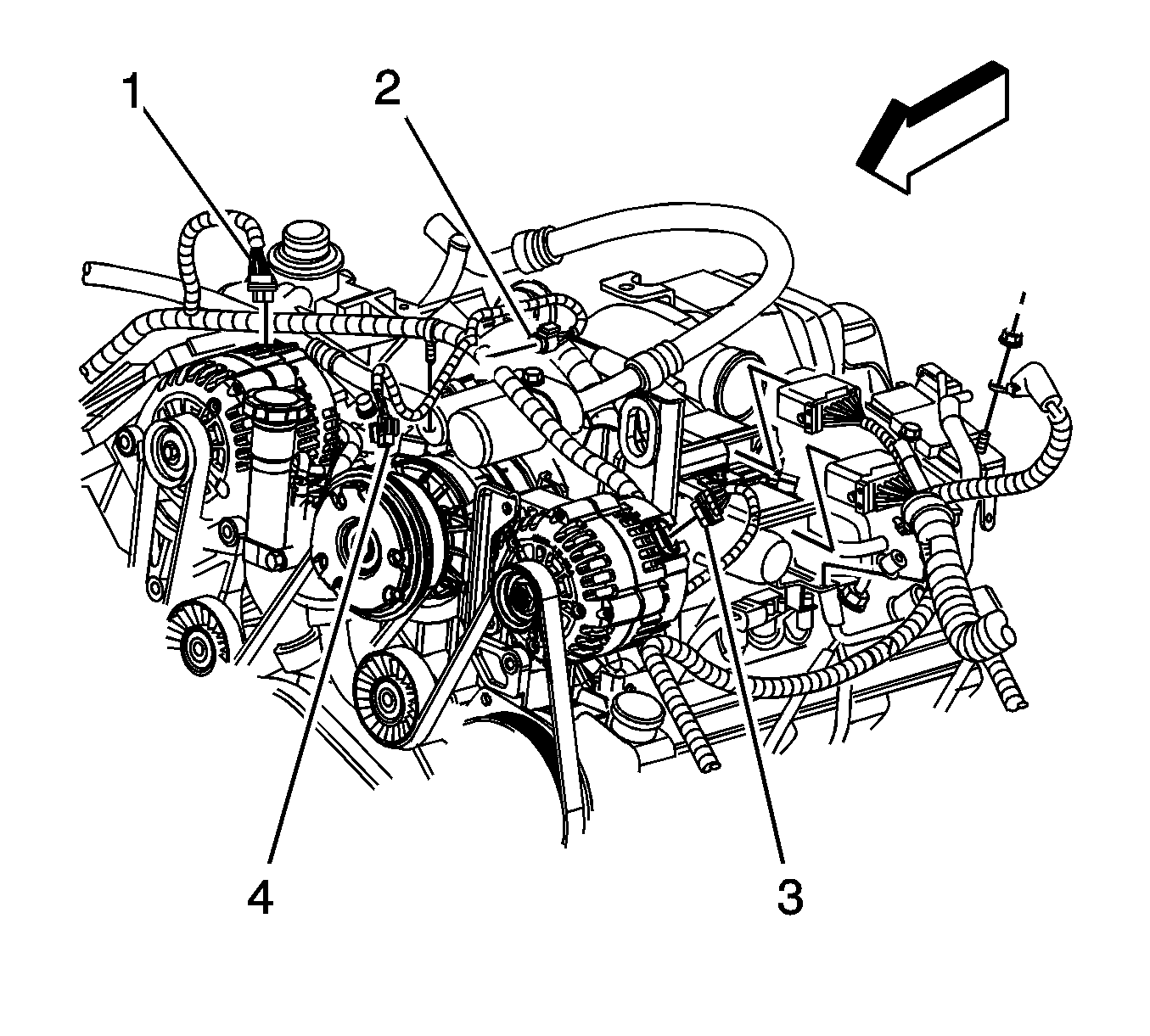
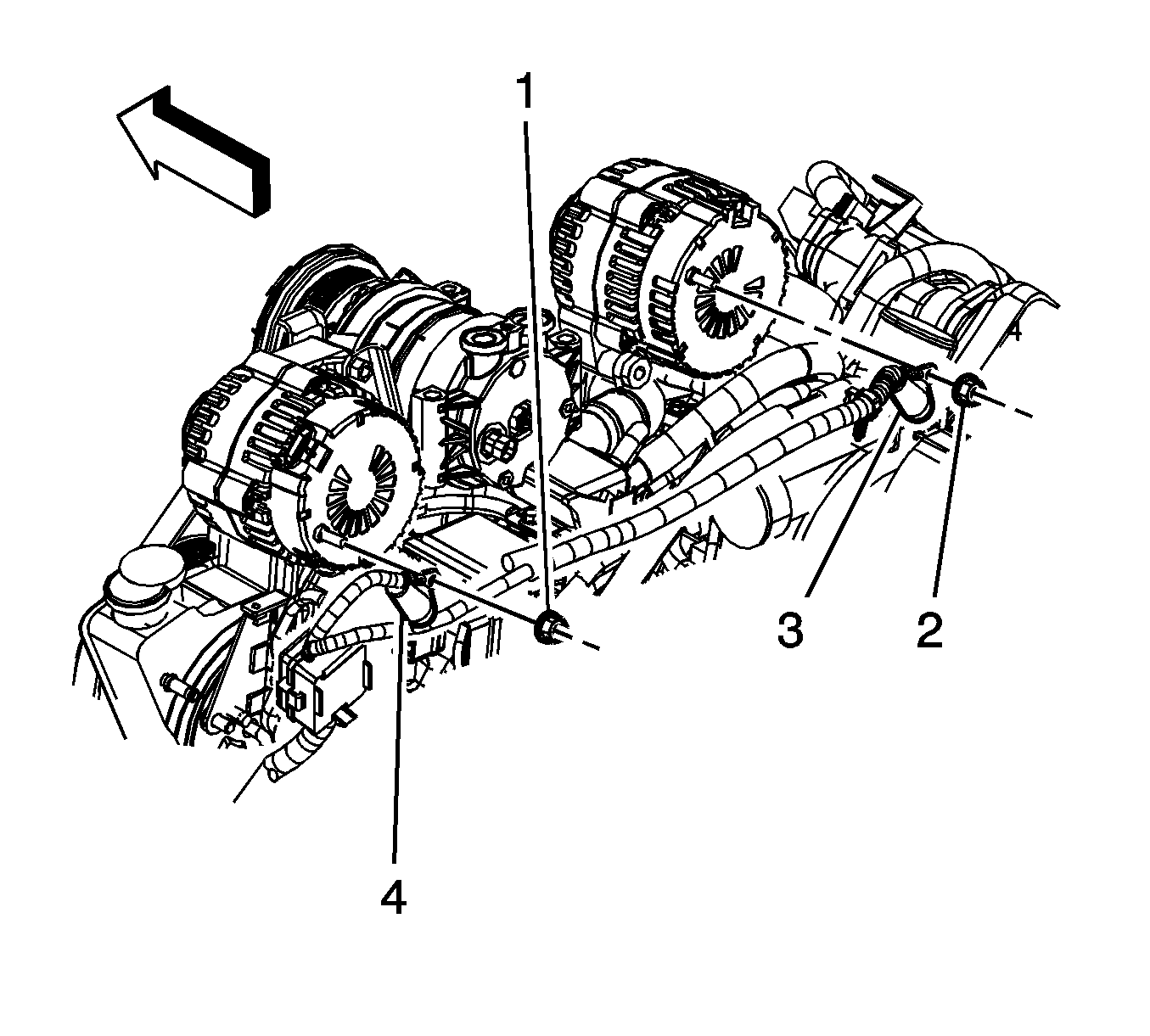
| 4.1. | Slide the boot (4) down to access the terminal stud. |
| 4.2. | Remove the positive cable nut (1). |
| 4.3. | Remove the positive cable. |
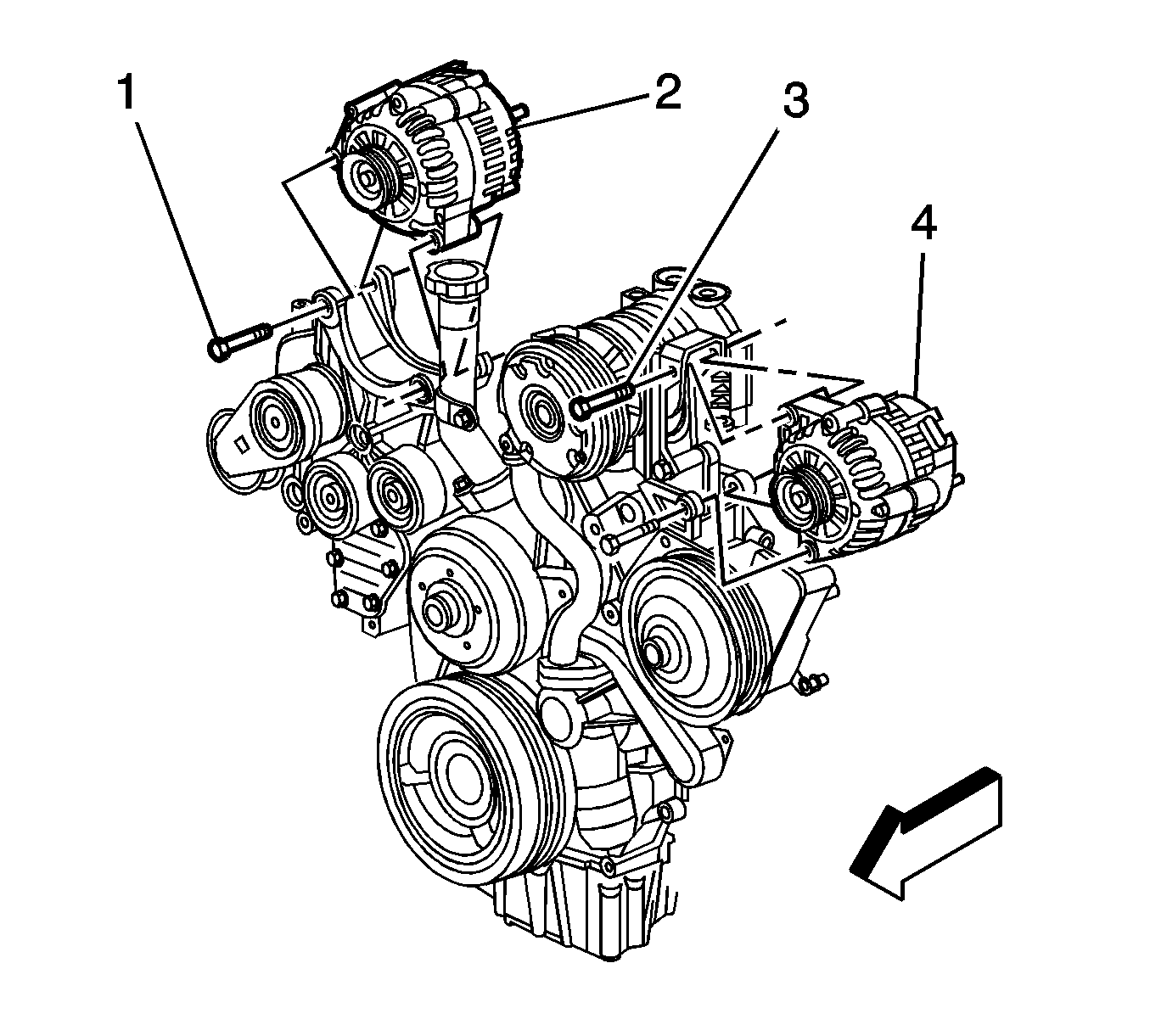
Installation Procedure
- Install the auxiliary generator (4).
- Install the auxiliary generator bolts (3).
- Install the positive cable to the auxiliary generator, perform the following:
- Install the drive belt. Refer to Drive Belt Replacement .
- Connect the auxiliary generator electrical connector (3).
- Connect the negative battery cable. Refer to Battery Negative Cable Disconnection and Connection .
Notice: Refer to Fastener Notice in the Preface section.

Tighten
Tighten the bolts to 50 N·m (37 lb ft).

| 3.1. | Install the positive cable. |
| 3.2. | Install the positive cable nut (1). |
Tighten
Tighten the nut to 9 N·m (80 lb in).
| 3.3. | Slide the boot (4) up to cover the terminal stud. |

